All is quiet at the peregrine falcon nest at the University of Pittsburgh.
Every day has the same routine. Dorothy spends the night on the nest and wakes as the sun rises. E2 roosts nearby and is already out hunting as she awakes. When he returns he calls to her, then takes the prey to a cache area to pluck it. He insists on preparing it himself and won’t let her eat until it’s ready.
Dorothy waits. When her breakfast is properly prepared, E2 flies out with it and calls again. She comes out to get it and he flies to the nest to take over incubation. He turns the eggs and gets ready for a long sit.
After Dorothy eats and preens and flies a bit she’s ready to sit again. Sometimes when she comes back to the nest E2 doesn’t want to leave and they “discuss” whether it’s her turn. Dorothy always wins these discussions. E2 leaves and she resumes incubation. In a few hours it will be his turn again.
This changing of the guard happens over and over every day during incubation (33-35 days) and brooding (about a week) as shown in the slideshow above.
At the Gulf Tower the adult peregrines, Tasha and Louie, have nearly finished incubation. Their eggs will hatch in a few days, approximately April 19th, give or take a day. At Pitt the eggs will hatch around April 25th. (This post was written in 2009.)
Watch the webcams at Gulf Tower and University of Pittsburgh nests. Maybe you’ll be the first to see the eggs hatch.
(photo from the National Aviary webcam at the University of Pittsburgh peregrine nest)
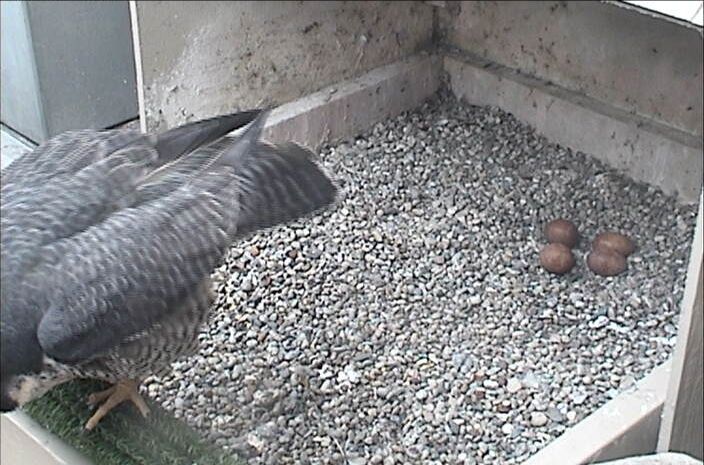
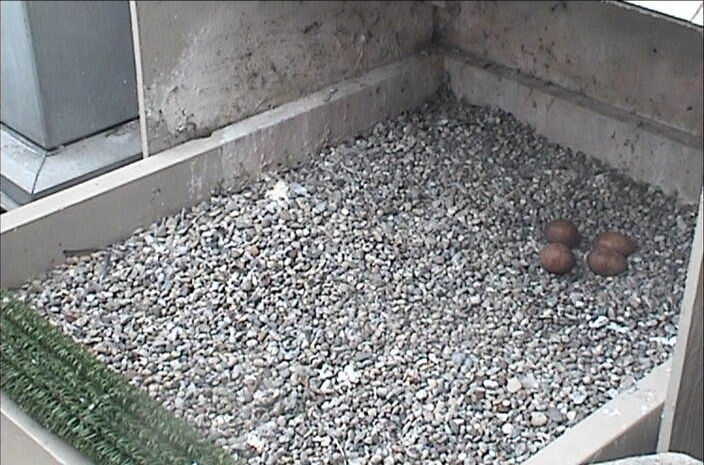
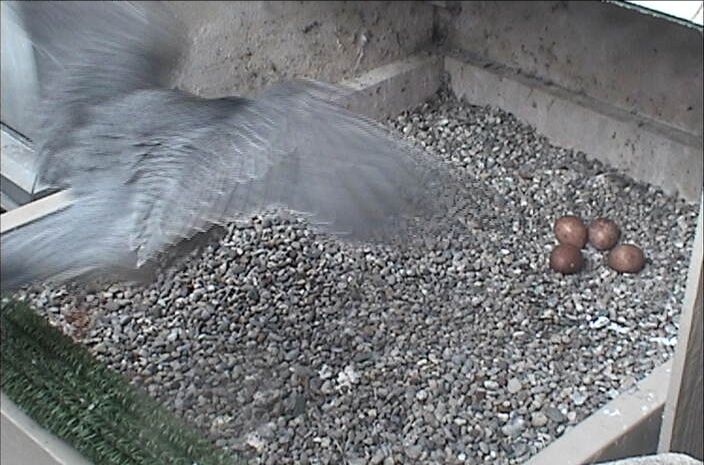
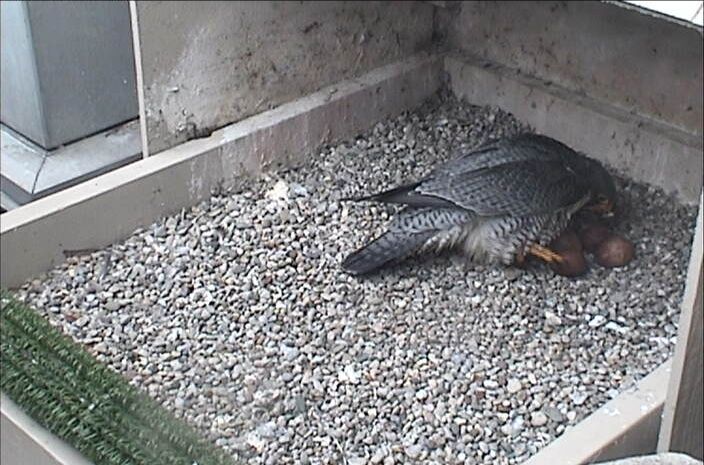
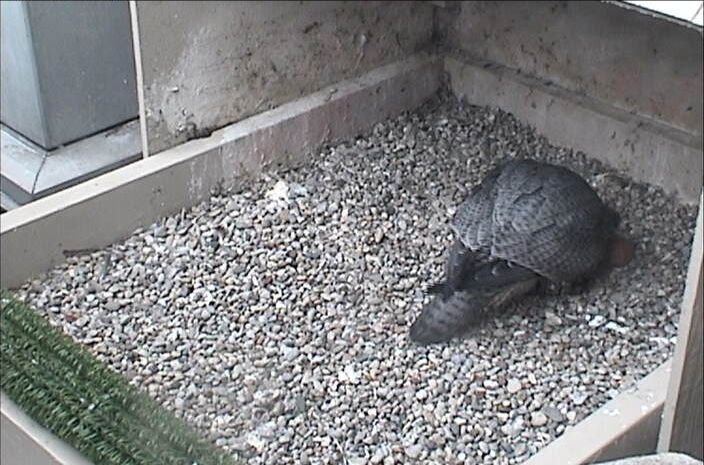
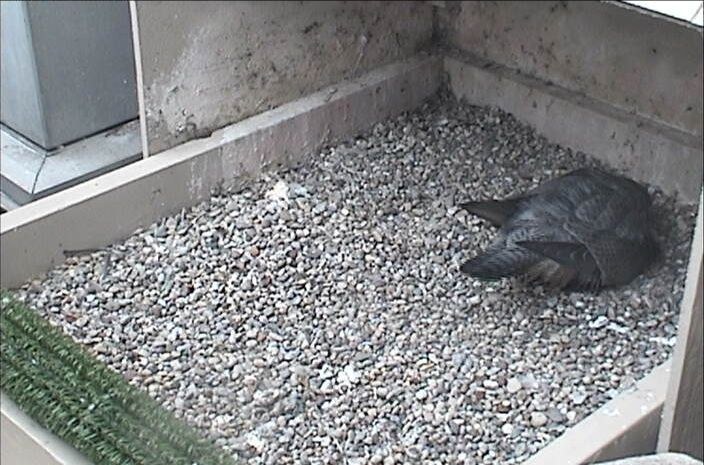
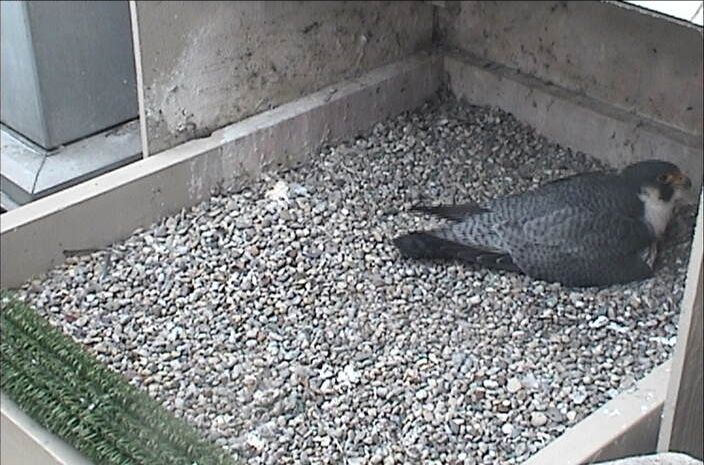
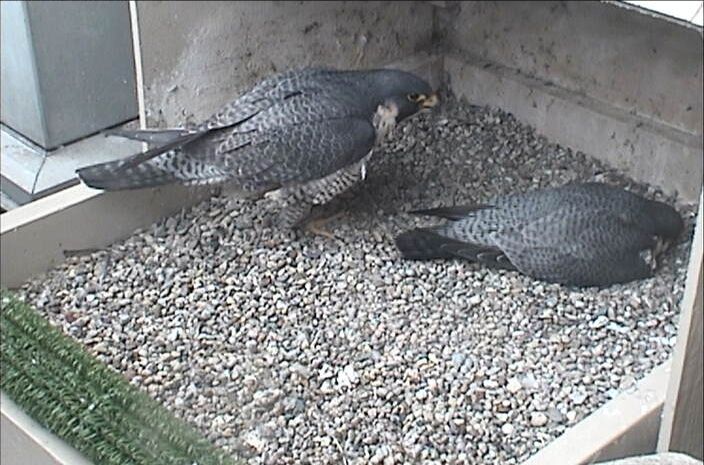
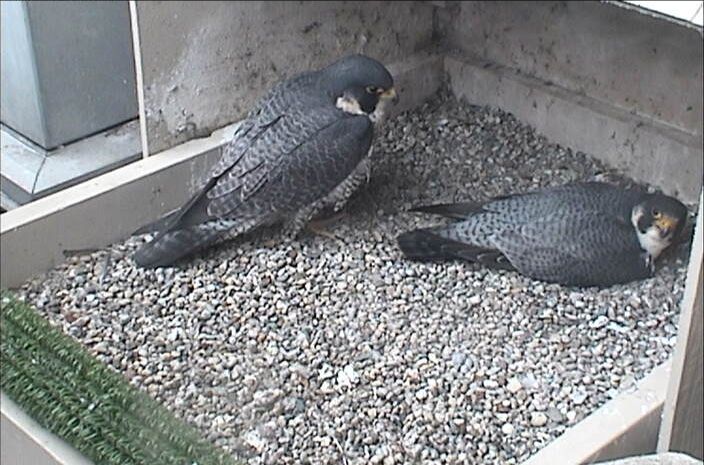
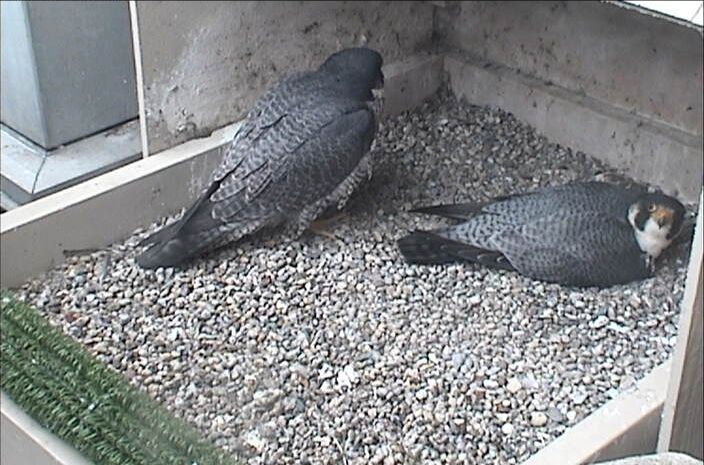
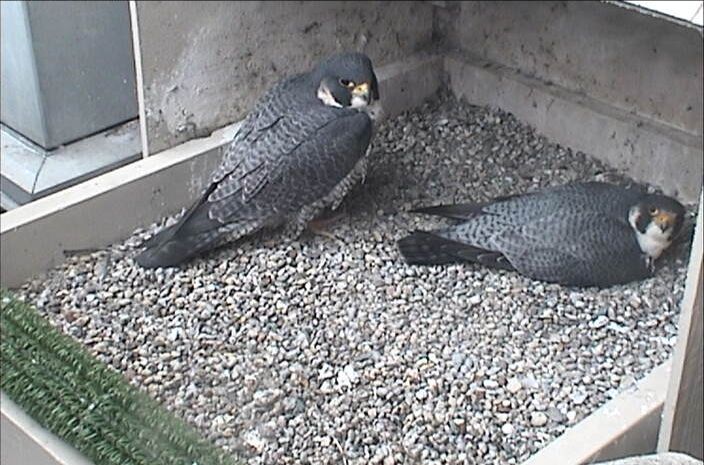
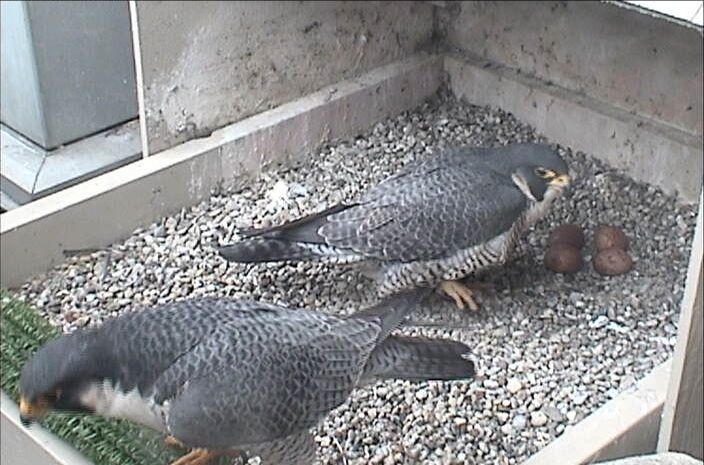
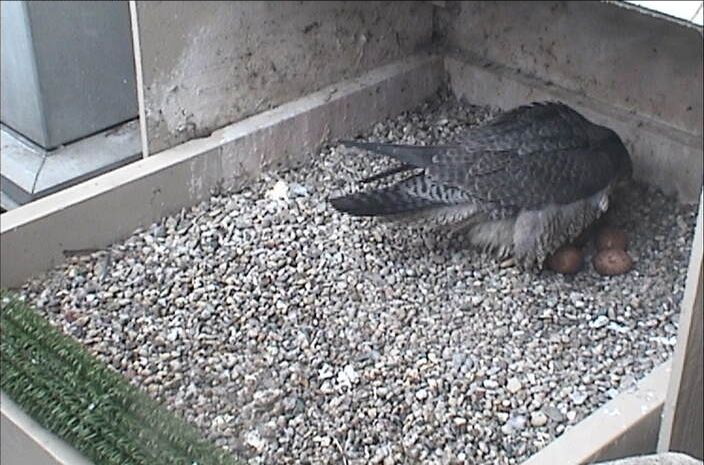
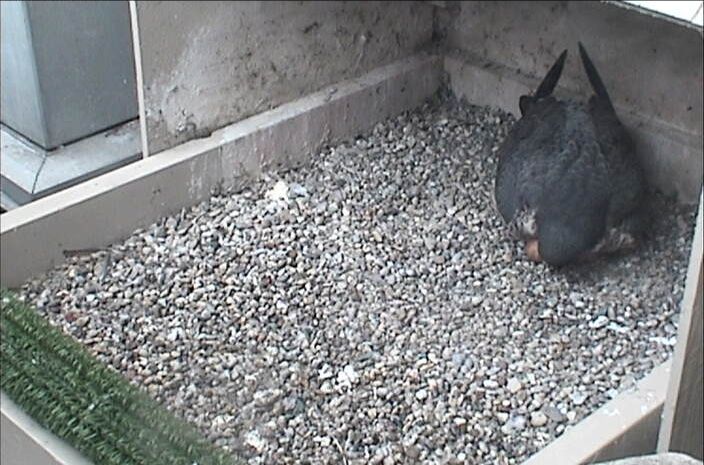
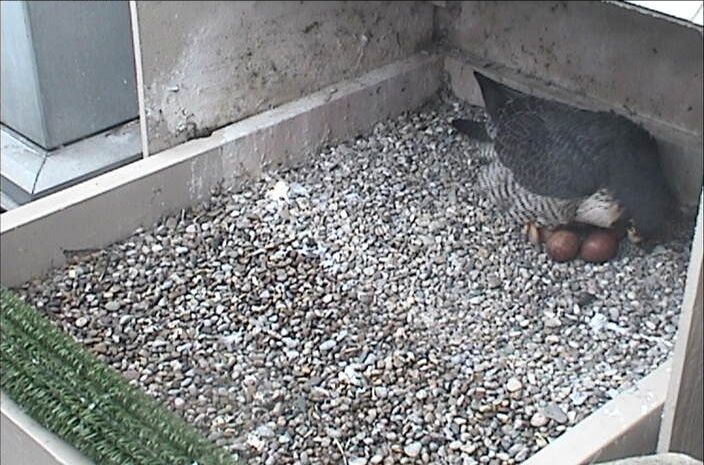
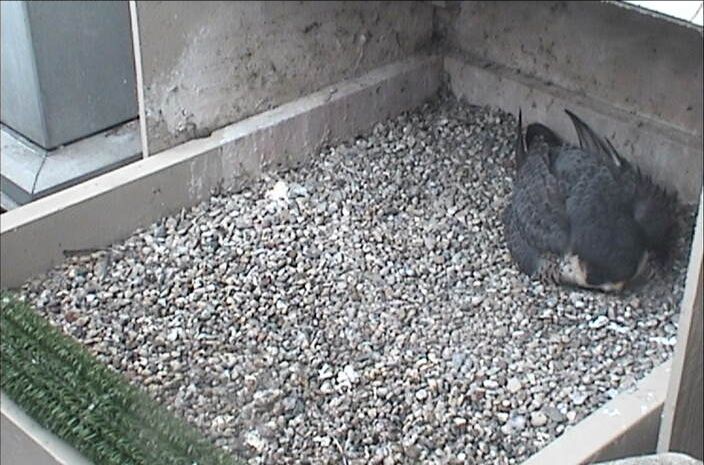
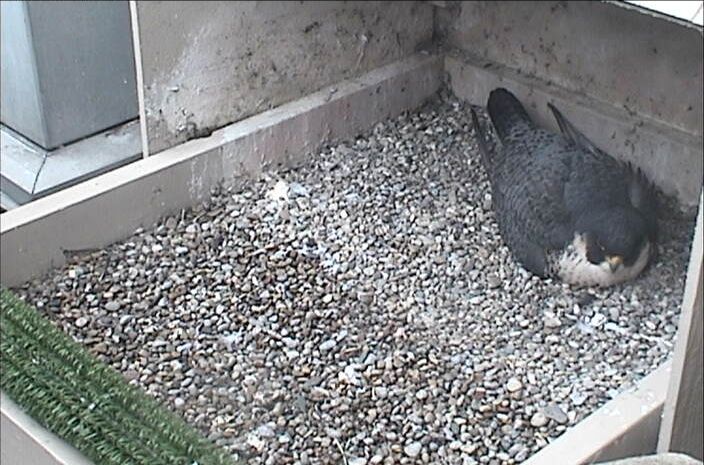
Well, I’m certainly happy to see this update. As you predicted, “The Big Sit” was getting very boring! 😉 When I get back on the 26th from visiting my kids, perhaps there will be some little white cotton balls to watch.
Wow, that’s so cool!!! I had no idea he prepared her food for her. Do all males do that or does it just depend on the bird?
E2 is very particular about preparing Dorothy’s food compared to her previous mate, Erie. Erie did some basic preparation (head off, etc) but left a lot of it up to Dorothy. E2 plucks the prey clean and makes it look almost like chicken bought in the grocery store – no head, no wings, no feet, no feathers. While he does this he takes a bite or two, so he doesn’t go unrewarded.
How are you able to see E2 do this? Will they both do this for the chicks? I would imagine they would bring the whole bird to the nest, else how would the chicks learn to clean the food themselves?
Thanks again for your blog! It’s such a privledge to have access to your experience and knowledge!!
We are able to see E2 do this because we are on the ground watching the birds. From there we see him bring in prey. Dorothy comes out to get it but he won’t let her have it. She used to try to take it from him but he won’t let her. Actions speak louder than words. He will leave the prep area – with prey – if she tries to take the food before it’s ready. When it’s ready we can see through binoculars that it is completely plucked and clean. Amazing.
Tueday April 21: I don’t know about you but I’m getting impatient waiting for Tasha’s eggs to hatch. Many years her eggs hatch on the same day as her daughter’s (named SW) in Cleveland. SW’s eggs hatched yesterday so…
I am impatient!! I’ve been making up for the wait by watching the three eaglets over at Norfolk Botanical Garden! It’s been so incredible watching that unfold. The third egg was late to hatch and when it finally did, the youngest chick was bullied by its two siblings. What was amazing was how the eagle parents made sure all three were equally fed.
In today’s environmental crisis, I find that I worry that the birds will even find enough food to feed their young…but those eagle parents bring fish after fish and once, some sort of small mammal.
They are getting ready to remove the eaglets and band them this Wednesday. They’ve grown that quickly. I wonder that the parents will tolerate the human smell on the eaglets? But apparently, all they will do its yell and circle overhead and then resume feeding/caring for them when the eaglets are back in the nest. I guess it works with way with the Falcon’s too?
I’ve never watched any of this unfold before…so am excited to see Dorothy and E2’s eggs hatch. I’m more attached to that pair because they are the one’s I ‘discovered’ first …
Thanks again for your blog and for always answering questions!!
>I wonder that the parents will tolerate the human smell on the eaglets?
Actually, most birds have little/no sense of smell so the eagles won’t notice on that account. Having no sense of smell is how Great Horned Owls can eat skunks without flinching.
Turkey Vultures are the big exception. They cruise around sniffing the air for bad smells. Go figure!
Speaking of turkey vultures, I wonder where a majority of them nest. I know they like hollow logs and crevices but along the banks of the Mon in Pittsburgh there are tons of turkey vultures, I sometimes see them in numbers close to 30.. It would be awseome to stumble upon one of their nests.
I suspect they nest on the hillsides above the rivers. They want sites that are isolated from humans & the steep river slopes seem to fit the bill.